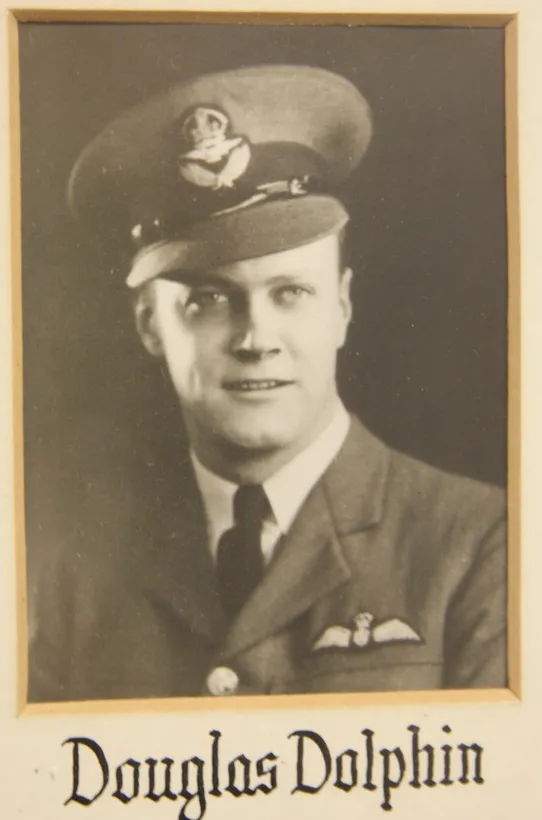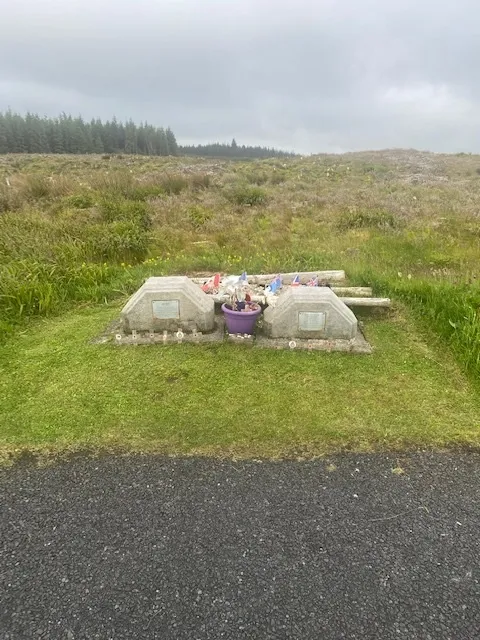Dolphin, Douglas James (Flight Lieutenant)
Killed in Flying Accident 1943-November-18


Birth Date: 1920-June-30
Born: Toronto, Ontario
Parents: Charles Bramel & Doris Alexandrine (nee Stovel) Dolphin
Spouse: Mary June Dunfield Williams Dolphin, Glen Cove, NY
Home: Toronto, Ontario (parents)
Enlistment: Halifax, Nova Scotia
Enlistment Date: 1941-October-27
Service
RCAF
Unit
201 (MP) Sqn- Squadron (RAF)
Hic Et Ubique Here and everywhere
Base
RAF Castle Archdale, Northern Ireland
Rank
Flight Lieutenant
Position
Pilot
Service Numbers
J/6397
Mission
Sunderland Mk.III W4036
Convoy Patrol 1943-November-17 to 1943-November-18
201 (MP) Sqn (RAF) RAF Castle Archdale, Northern Ireland

Training Accident. Sunderland aircraft crashed while practicing night lands on flarepath. Sank at Rossmore, Fermanagh, Northern Ireland.
Others killed:
- Sergeant John Bosanko GREEN (1149192)
- Sergeant Elvet PARRY (1434601) Air Gunner Commemorated Mold Cemetery, United Kingdom
![]() Summary Operations Record Book 201 Squadron
Summary Operations Record Book 201 Squadron
Sunderland serial: W4036

Short Sunderland, coded Z, 15 Apr 1943
The Short S.25 Sunderland was a British flying boat patrol bomber, developed and constructed by Short Brothers for the Royal Air Force (RAF). The aircraft took its service name from the town (latterly, city) and port of Sunderland in North East England.
Developed in parallel with the civilian S.23 Empire flying boat, the flagship of Imperial Airways, the Sunderland was developed specifically to conform to the requirements of British Air Ministry Specification R.2/33 for a long-range patrol/reconnaissance flying boat to serve with the Royal Air Force (RAF). As designed, it served as a successor to the earlier Short Sarafand flying boat. Sharing several similarities with the S.23, it featured a more advanced aerodynamic hull and was outfitted with various offensive and defensive armaments, including machine gun turrets, bombs, aerial mines, and depth charges. The Sunderland was powered by four Bristol Pegasus XVIII radial engines and was outfitted with various detection equipment to aid combat operations, including the Leigh searchlight, the ASV Mark II and ASV Mark III radar units, and an astrodome.
The Sunderland was one of the most powerful and widely used flying boats throughout the Second World War. In addition to the RAF, the type was operated by other Allied military air wings, including the Royal Australian Air Force (RAAF), Royal Canadian Air Force (RCAF), South African Air Force (SAAF), Royal New Zealand Air Force (RNZAF), French Navy, Norwegian Air Force, and the Portuguese Navy. During the conflict, the type was heavily involved in Allied efforts to counter the threat posed by German U-boats in the Battle of the Atlantic. Wikipedia